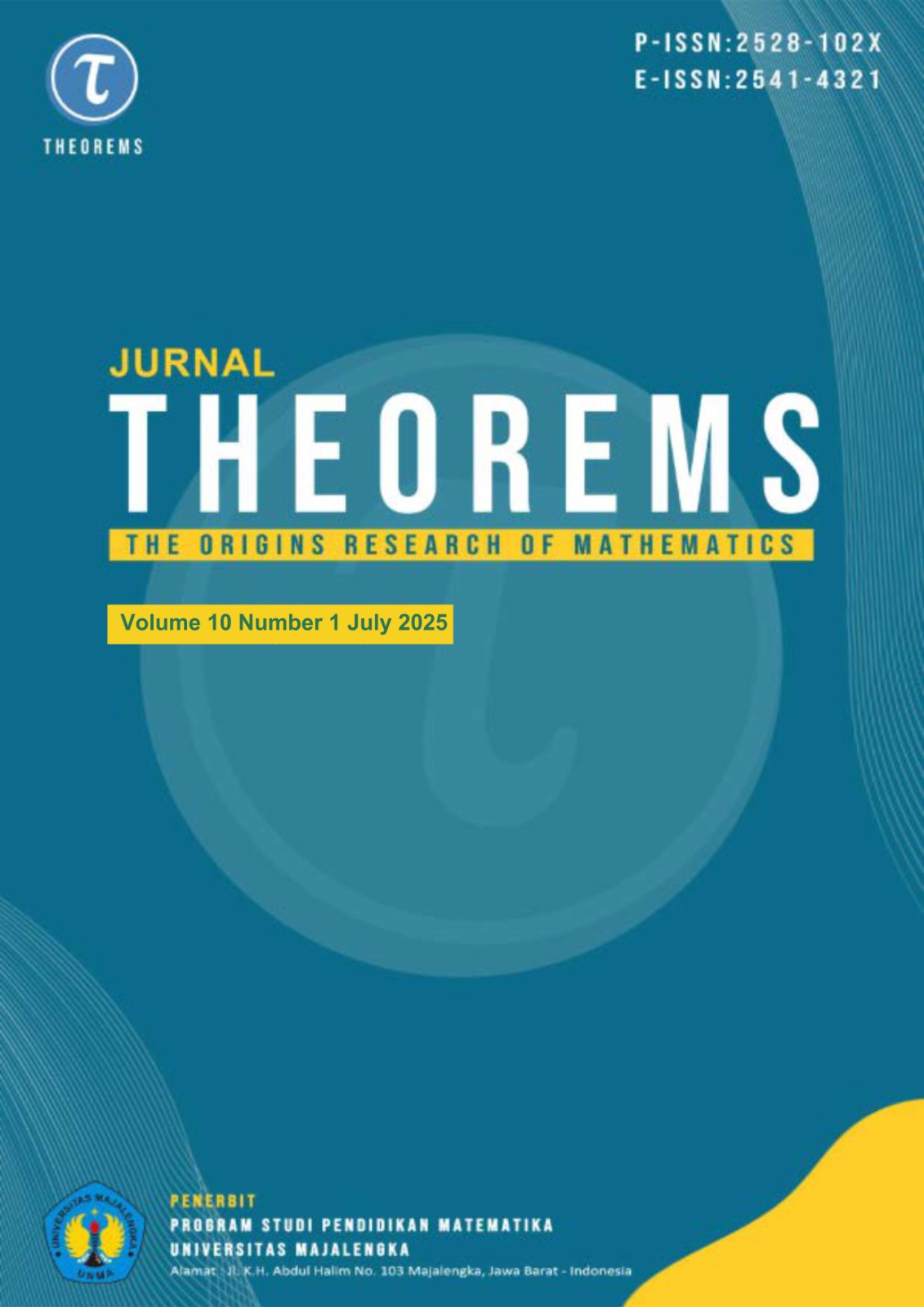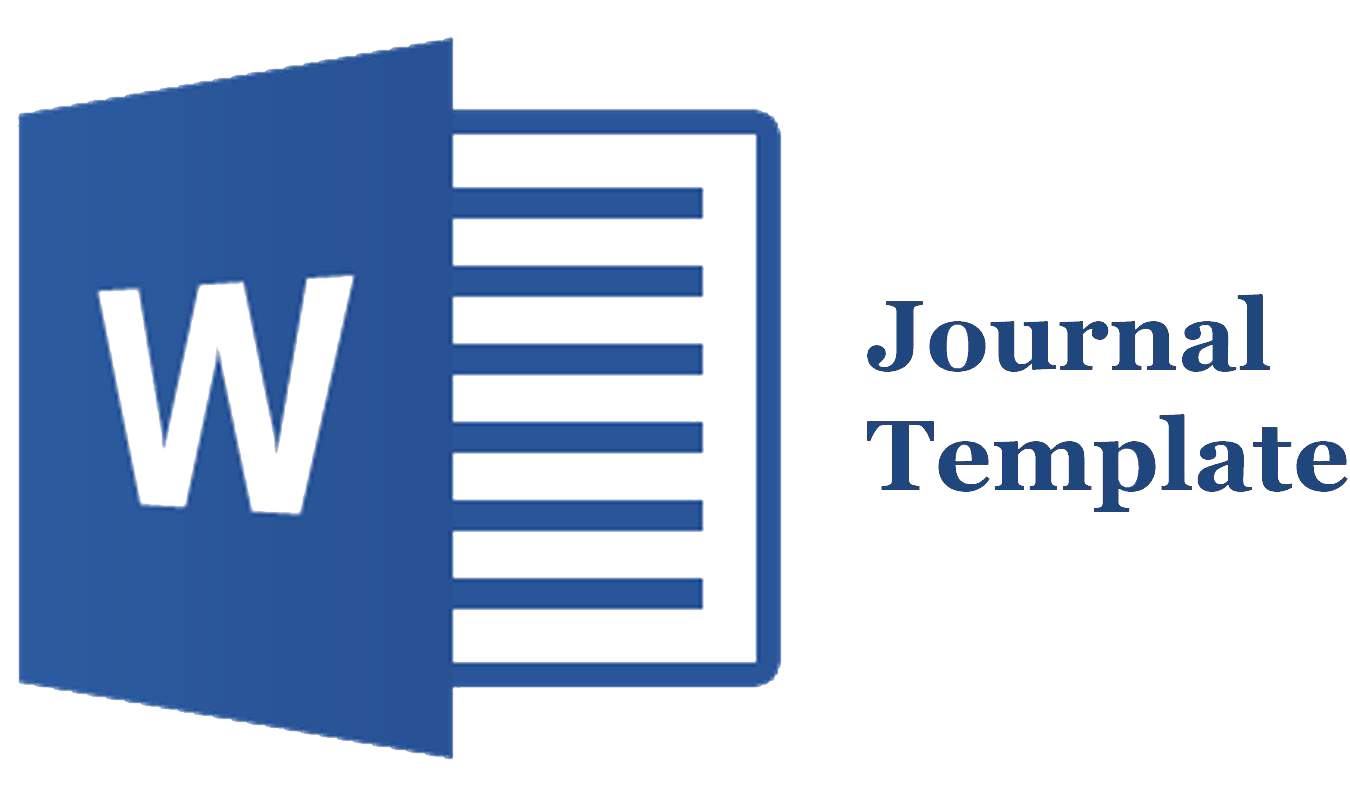Local learning trajectory with multimodal approach through mathematical transfer: Bibliometric analysis 2015 – 2025
DOI:
https://doi.org/10.31949/th.v10i1.14737Abstract
The fundamental challenge in analyzing learning trajectory in geometry learning using mathematical transfer needs to be done. The problem of geometry learning focuses on the condition of students who often have difficulty constructing conceptual understanding and connecting it with various mathematical representations. This study aims to comprehensively analyze research trends on local learning trajectories with a multimodal approach through mathematical transfer in the time span of 2015 to 2025. Research questions are 1) What are the annual publication trends related to local learning trajectories using a multimodal approach through mathematical transfer from 2015 to 2025, based on data from Scopus, 2) Who are the most influential country and journals, and the research trend in this field? The method used is bibliometric analysis with the help of Biblioshiny to map publication trends, identify research gaps, and find keywords and topics that have not been widely explored. The data for this study will be analyzed using bibliometric methods, involving the identification of publication trends, collaboration networks, and thematic clusters of relevant from relevant articles sourced from Scopus databases between 2015 and 2025 using 221 documents. The results of the research novelty search are Publications on local learning trajectories with multimodal approaches and mathematical transfer increased rapidly from 2020 to 2022, according to Scopus data. The United States and the United Kingdom were major contributors, and journals such as the Journal of Mathematical Behavior became important platforms. Overall, this study highlights the growing interest in adaptive learning trajectory models and learning technologies, providing guidance for future educational research and practice
Keywords:
local learning trajectory, understanding geometry concepts, interactive multimodal approach, , mathematics transferDownloads
References
Canducci, M., Rocci, A., & Sbaragli, S. (2021). The influence of multimodal textualization in the conversion of semiotic representations in Italian primary school geometry textbooks . Multimodal Communication, 10(2). https://doi.org/10.1515/mc-2020-0015
Clements, D. H., & Sarama, J. (2004). Learning Trajectories in Mathematics Education. Mathematical Thinking and Learning, 6(2). https://doi.org/10.1207/s15327833mtl0602_1
Firmansyah, M. B., Andriyani, A. A. A. D., & Asih, R. A. (2022). Bibliometric Analysis of Multimodality Based on Multimodal Learning. SSRN Electronic Journal. https://doi.org/10.2139/ssrn.4298216
Guo, W., Wang, J., & Wang, S. (2019). Deep Multimodal Representation Learning: A Survey. IEEE Access, 7. https://doi.org/10.1109/ACCESS.2019.2916887
Kiselnikov, I. (2020). Figurative Thinking In Studyng And Teaching Fundamental Mathematical Concepts At School. https://doi.org/10.15405/epsbs.2020.12.04.48
Leahy, W., & Sweller, J. (2011). Cognitive load theory, modality of presentation and the transient information effect. Applied Cognitive Psychology, 25(6). https://doi.org/10.1002/acp.1787
Manzoor, M. A., Albarri, S., Xian, Z., Meng, Z., Nakov, P., & Liang, S. (2023). Multimodality Representation Learning: A Survey on Evolution, Pretraining and Its Applications. ACM Transactions on Multimedia Computing, Communications and Applications, 20(3). https://doi.org/10.1145/3617833
Moore, K. C. (2021). Graphical Shape Thinking and Transfer. https://doi.org/10.1007/978-3-030-65632-4_7
Nathan, M. J., & Alibali, M. W. (2021). An Embodied Theory of Transfer of Mathematical Learning. https://doi.org/10.1007/978-3-030-65632-4_2
NOOR, N., & ALGHADARI, F. (2021). Case of Actualizing Geometry Knowledge in Abstraction Thinking Level for Constructing a Figure. International Journal of Educational Studies in Mathematics, 8(1). https://doi.org/10.17278/ijesim.797749
O’Halloran, K. L. (2015). The language of learning mathematics: A multimodal perspective. Journal of Mathematical Behavior, 40. https://doi.org/10.1016/j.jmathb.2014.09.002
Orón, J. V., & Lizasoain, I. (2023). Achieving Transfer from Mathematics Learning. Education Sciences, 13(2). https://doi.org/10.3390/educsci13020161
Pei, B., Xing, W., & Wang, M. (2023). Academic development of multimodal learning analytics: a bibliometric analysis. Interactive Learning Environments, 31(6), 3543–3561. https://doi.org/10.1080/10494820.2021.1936075;PAGE:STRING:ARTICLE/CHAPTER
Rebello, N. S., Cui, L., Bennett, A. G., Zollman, D. A., & Ozimek, D. J. (2017). Transfer of Learning in Problem Solving in the Context of Mathematics and Physics. In Learning to Solve Complex Scientific Problems. https://doi.org/10.4324/9781315091938-10
Revina, S., & Leung, F. K. S. (2021). Issues involved in the adoption of Realistic Mathematics Education in Indonesian culture. Compare, 51(5), 631–650. https://doi.org/10.1080/03057925.2019.1650636
Sedaghatjou, M. (2018). Advanced mathematics communication beyond modality of sight. International Journal of Mathematical Education in Science and Technology, 49(1). https://doi.org/10.1080/0020739X.2017.1339132
Shamsutdinova, T. M. (2021). Formation of Individual Educational Trajectory in Adaptive Learning Management Systems. Open Education, 25(6). https://doi.org/10.21686/1818-4243-2021-6-36-44
Simon, M. A., & Tzur, R. (2004). Explicating the Role of Mathematical Tasks in Conceptual Learning: An Elaboration of the Hypothetical Learning Trajectory. Mathematical Thinking and Learning, 6(2). https://doi.org/10.1207/s15327833mtl0602_2
Suzuki, M., & Matsuo, Y. (2022). A survey of multimodal deep generative models. Advanced Robotics, 36(5–6). https://doi.org/10.1080/01691864.2022.2035253
Umasugi, S. M., Sugiman, S., Jana, P., & Kraiviset, P. (2022). Realistic Mathematics Education (RME)-Based Learning Trajectory for Arithmetic Social Using Culinary Context of Yogyakarta. Jurnal Kependidikan: Jurnal Hasil Penelitian Dan Kajian Kepustakaan Di Bidang Pendidikan, Pengajaran Dan Pembelajaran, 8(4). https://doi.org/10.33394/jk.v8i4.6176
Xu, P., Zhu, X., & Clifton, D. A. (2023). Multimodal Learning With Transformers: A Survey. IEEE Transactions on Pattern Analysis and Machine Intelligence, 45(10). https://doi.org/10.1109/TPAMI.2023.3275156
Zbiek, R. M., Peters, S. A., Galluzzo, B., & White, S. J. (2024). Secondary mathematics teachers learning to do and teach mathematical modeling: a trajectory. Journal of Mathematics Teacher Education, 27(1). https://doi.org/10.1007/s10857-022-09550-7
Published
How to Cite
Issue
Section
License
Copyright (c) 2025 Siti Khoiruli Ummah, Sugiman, Yus Mochamad Cholily, Heri Retnawati, Erik Santoso

This work is licensed under a Creative Commons Attribution-ShareAlike 4.0 International License.








